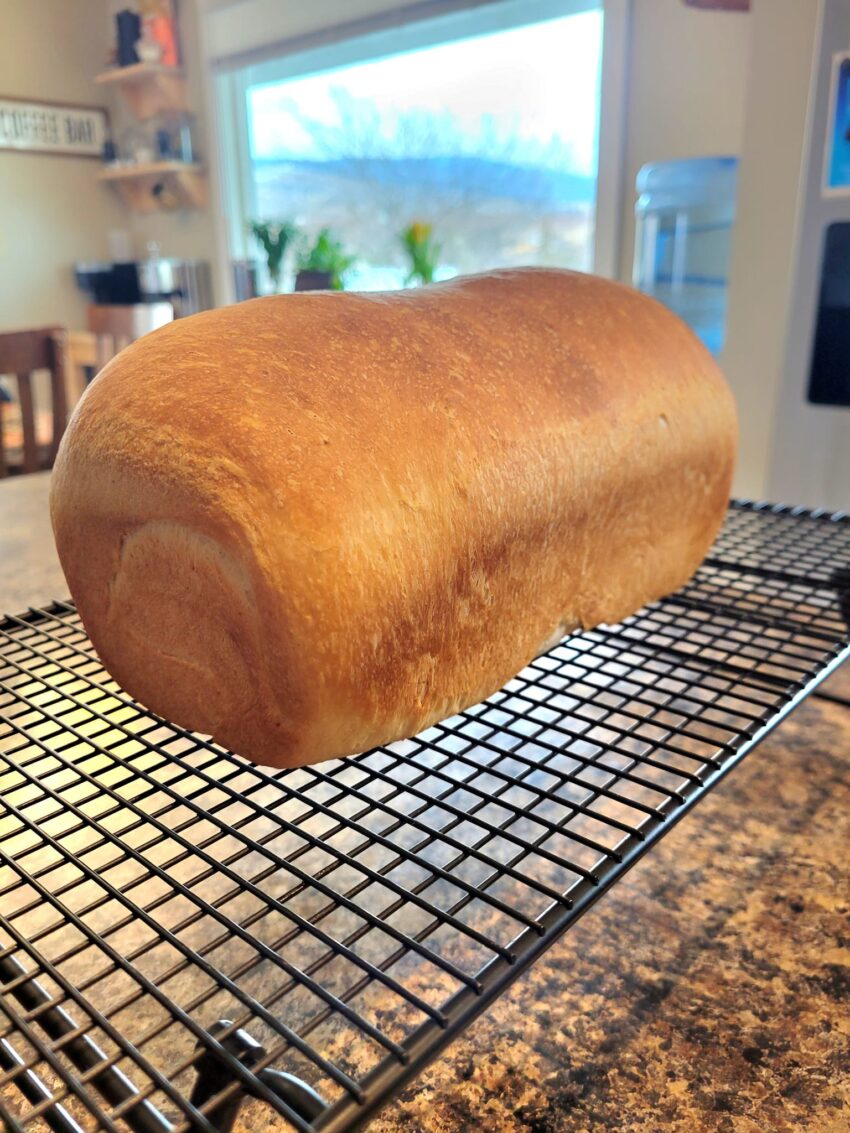Crafting a loaf of sourdough sandwich bread is a journey that brings together the timeless art of sourdough baking with the everyday convenience of sandwich bread. The process may require patience, but the reward is a loaf that boasts a soft, tender crumb encased in a golden, slightly chewy crust. The natural fermentation process, driven by your sourdough starter, imparts a depth of flavor that’s both subtly tangy and richly complex, making each slice not just a vessel for your favorite fillings, but a flavorful experience in its own right. Whether enjoyed fresh or toasted, this bread elevates even the simplest of sandwiches to something truly special.
Ingredients:
- Levain (Starter):
- 50g active sourdough starter
- 100g all-purpose flour
- 100g water
- Dough:
- 500g bread flour (or a mix of bread and all-purpose flour)
- 300g water
- 100g levain (prepared from the above starter)
- 10g salt
- 30g unsalted butter, softened
- 20g sugar (optional, for a slightly sweeter bread)
Instructions:
- Prepare the Levain:
- The night before baking, mix 50g of your active sourdough starter with 100g of all-purpose flour and 100g of water. Cover and let it sit at room temperature overnight, or until it has doubled in size and is bubbly.
- Mix the Dough:
- In a large mixing bowl, combine 100g of the prepared levain with 300g of water. Stir to dissolve the levain into the water. Add 500g of bread flour and mix until a rough dough forms. Cover the bowl and let it rest (autolyse) for 30 minutes.
- Add Salt and Butter:
- After the autolyse, add 10g of salt and 30g of softened butter to the dough. Mix thoroughly until the butter is fully incorporated and the dough is smooth. This can take a few minutes of kneading by hand or using a stand mixer with a dough hook.
- Bulk Fermentation:
- Cover the dough and let it ferment at room temperature for 3 to 4 hours, performing a series of stretch and folds every 30 minutes for the first 2 hours. To do a stretch and fold, grab the edge of the dough, stretch it upwards, and fold it over itself. Rotate the bowl and repeat on all sides.
- Shape the Dough:
- After bulk fermentation, the dough should have risen and become puffy. Lightly flour your work surface, then gently turn the dough out onto it. Shape the dough into a rectangle, then fold the sides in like an envelope. Roll the dough tightly from one end to the other to form a loaf shape.
- Final Proof:
- Place the shaped dough seam-side down into a lightly greased loaf pan. Cover and let it proof for 2 to 4 hours, or until the dough has risen to just above the edge of the pan. This time may vary depending on the temperature of your kitchen.
- Preheat the Oven:
- Preheat your oven to 375°F (190°C) about 30 minutes before baking.
- Bake the Bread:
- Once the dough is fully proofed, bake it in the preheated oven for 35 to 40 minutes, or until the crust is golden brown and the internal temperature reaches 200°F (93°C). If the top of the loaf is browning too quickly, tent it with aluminum foil.
- Cool and Slice:
- Remove the bread from the oven and let it cool in the pan for 10 minutes. Then, transfer the loaf to a wire rack to cool completely before slicing. This cooling period allows the crumb to set, making slicing easier.
